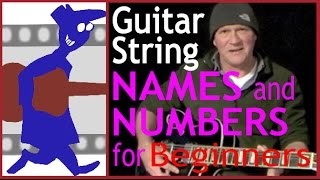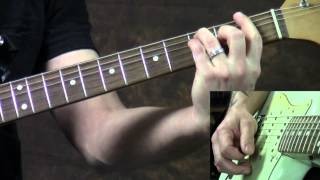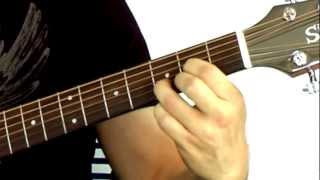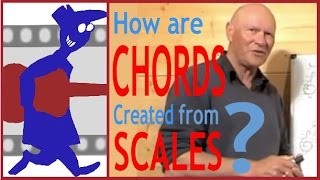The Major Scale
Published on 26 January 2016
For more information from the source site of this video please visit: http://secretguitarteacher.com/youtube/advanced/theory/qq5ogYIT9QM/83775167-the-major-scale.php
Tones semitones and the major scale formula
Once we have learned to use the chromatic scale and become familiar with naming the notes on that scale both ascending using sharps and descending using flats then we can move on up to the next level of studying guitar musical theory.
The next step is to define the terms Tone and Semitone. These can also be referred to as Whole step and Half step.
On the guitar it is pretty easy to define these terms:
Play any note and move one fret higher on the neck and you have moved up a Semitone or Half step.
Play any note and move up TWO frets and you have moved up a Tone or Whole step.
So the frets on a guitar are placed a semitone apart and two semitones make a tone.
That is a guitarist's definition, but it won't make much sense talking in those terms to your sax player or keyboard player.
So here's the broader Musician's definition:
A tone is defined as the interval between any two alternate notes on the chromatic scale.
And a semitone is defined as the interval between any two adjacent notes on the chromatic scale.
These are more useful definitions when you are trying to work things out in your head.
But applying them can be a bit tricky. If I ask which note is a tone above A? That's not too hard A.. A#.. B is the answer.
But what note is a tone down from F?
Did you get Eb?
What note is a tone above E?
Did you get F#?
This is why it is so important to know your chromatic scale really well.
On to the Major Scale Formula.
As we may have mentioned before the Major scale is of massive importance to the whole way we discuss music theory. It is in effect the measuring stick against which we define everything else we discuss. So being able to create Major scales in all keys at any point on the fretboard is a very useful ability to master.
To play the Major scale of any note we simply play that note and then add more notes in ascending order according to this formula:
Key of G (up one string)
Key of Bb (up one string)
Have a go at that yourself. Try a few different keys and check by ear to see if it sounds right.
One problem that people frequently run into with this is that they try to apply the formula to the notes when it actually applies to the gaps between the notes.
Trick is to always play the first note BEFORE you start applying the formula.
It may also be worth looking at it from one or two more angles:
Traditionally the Major Scale has been taught as being composed of two TETRACHORDS -- that's a nice word isn't it? It means FOUR NOTES.
If we play the first four notes (the lower tetrachord) like this: (see video).
You can see that they are spaced the same as the second four notes (the upper tetrachord)
So we have two identical patterns with a gap of one tone separating them.
Try that and see if it simplifies things for you.
One more view that I find useful under some circumstances is to think of the notes of the Major scale as been a Tone apart from each other except for the gap that comes just before the 4th note and the gap that comes just before the 8th note.
Four being halfway to 8 this again feels like it's almost logical!
Whilst the easiest way to visualise the formula is to play scales up and down the single strings, in practice we more often want our scale patterns to run straight across the fretboard or diagonally
Let's look at how we do this. At this stage it is not necessary to memorise these patterns -- in fact I would say it is counter-productive to do so. What we are really interested in is exploring how we apply the formula to create Major scale patterns in any key at any point of the fretboard in any direction.
- Positional playing
- Two ways to finger a tone
- Forward pattern
- Backward pattern
- Stretch pattern
- Effect of Second string anomaly
- Mixing together
So that's Tones, Semitones and the Major Scale Formula.
If you have followed this lesson right through and feel you have got the gist of it then well done -- that is another big chunk of Guitar Music Theory covered and you can check off that level on the Guitar Music Theory Pyramid and move onwards and upwards.
If you have found any of this confusing, please post a question and we'll be happy to help unravel things for you.
For your next lesson I recommend two options. If you already read music -- by which I mean standard notation -- then jump the lessons on that and go straight to the one on the Circle of Fifths (sharp key signatures).
If, like most guitarists you are not familiar with standard notation or if you want to refresh your knowledge of that subject then move right along to the next lesson.
Either way,
See you again soon!
 Diminished Chords - How to Play them on the Guitar...
Diminished Chords - How to Play them on the Guitar...
 Guitar Lesson: Basic Color Chords
Guitar Lesson: Basic Color Chords
 Guitar string names and numbers for beginners
Guitar string names and numbers for beginners
 Guitar Strumming Secrets - Part 1
Guitar Strumming Secrets - Part 1
 Guitar Hammer On and Pull Off Practice
Guitar Hammer On and Pull Off Practice
 3 Beginner Fingerstyle Riff Exercises - Guitar Les...
3 Beginner Fingerstyle Riff Exercises - Guitar Les...
 Guitar Lesson: Learn the CAGED Chord System - Part...
Guitar Lesson: Learn the CAGED Chord System - Part...
 Quick Start First Guitar Lesson - Guitar Lesson Fo...
Quick Start First Guitar Lesson - Guitar Lesson Fo...
 Mastering Major and Minor Pentatonic Scales
Mastering Major and Minor Pentatonic Scales
 Easy Guitar Chords for Beginners - Tutorial 1 (D a...
Easy Guitar Chords for Beginners - Tutorial 1 (D a...







